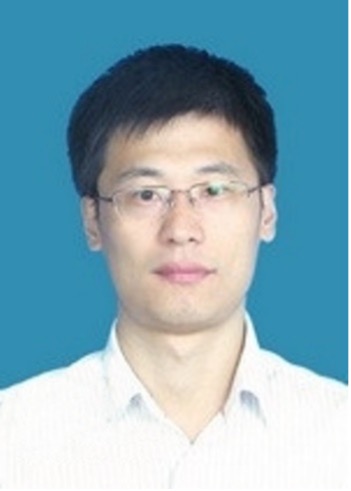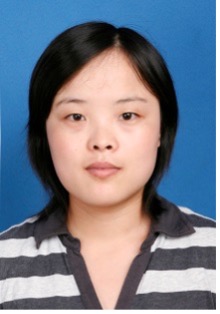Short Bio for Course: Ecological Theory and Technology
« Back to Course Collection Page
Wenlong ZhangLongfei WangLihua NiuHuanjun Zhang

Introduction Back to Top
Name: Wenlong Zhang
Position: Professor
Email: 1223zhangwenlong@163.com
Telephone: +86 13451927744
Research Fields and Interests
Sustainable water resource management
Micro-organism in water environment
Sustainable photocatalyst development
Education
2008-2014 Ph.D. in Environment Engineering, College of Environment, Hohai University, Nanjing, China
1998-2002 Bachelor in Environment Engineering, School of Environment Science and Spatial Informatics, China University of Mining and Technology, Xuzhou, China
Employment History
2016-present Professor, Hohai University, Nanjing, China
2014-2016 Lecturer, Hohai University, Nanjing, China
Selected Publications
Zhang Wenlong, Wang Hanlan, Li Yi* et al., 2020. Bend-induced sediment redistribution regulates deterministic processes and stimulates microbial nitrogen removal in coarse sediment regions of river. Water Research, 170: 115315.
Li Yi, Xu Chen, Zhang Wenlong* et al., 2020. Response of bacterial community in composition and function to the various DOM at river confluences in the urban area. Water Research, 169: 11.
Li Yi, Hui Cizhang, Zhang Wenlong* et al., 2020. Integrating Microbial Community Assembly and Fluid Kinetics to Decouple Nitrogen Dynamics in an Urban Channel Confluence. Environmental Science & Technology, 54: 11237-11248.
Zhang Wenlong, Lei Mengting, Li Yi* et al., 2019. Determination of vertical and horizontal assemblage drivers of bacterial community in a heavily polluted urban river. Water Research, 161: 98-107.
Zhang Wenlong, Gu Jinfei, Li Yi* et al., 2019. New Insights into Sediment Transport in Interconnected River-Lake Systems Through Tracing Microorganisms. Environmental Science & Technology, 53: 4099-4108.
Zhang Wenlong, Li Yi* et al., 2016. Modeling the biodegradation of bacterial community assembly linked antibiotics in river sediment using a deterministic–stochastic combined model. Environmental Science & Technology, 50, 8788-8798.
Li Yi, Xiong Wei, Zhang Wenlong* et al., 2016. Life cycle assessment of water supply alternatives in water-receiving areas of the South-to-North Water Diversion Project in China. Water Research, 89, 9-19.
Li Yi, Wang Chao, Zhang Wenlong* et al., 2015. Modeling the effects of hydrodynamic regimes on microbial communities within fluvial biofilms: combining deterministic and stochastic processes. Environmental Science & Technology, 49, 12869-12878.
Zhang Wenlong, Li Yi* et al., 2014. Seeking sustainability: multiobjective evolutionary optimization for urban wastewater reuse in China. Environmental Science & Technology, 48, 1094-1102.
Zhang Wenlong, Li Yi* et al., 2013.Mechanisms of simultaneous hydrogen production and estrogenic activity removal from secondary effluent though solar photocatalysis. Water Research, 47, 3173-3182.
Zhang Wenlong, Li Yi* et al., 2013. Energy recovery during advanced wastewater treatment: Simultaneous estrogenic activity removal and hydrogen production through solar photocatalysis. Water Research, 47, 1480-1490.
Zhang Wenlong, Li Yi* et al., 2012. Effect of water composition on TiO2 photocatalytic removal of endocrine disrupting compounds (EDCs) and estrogenic activity from secondary effluent. Journal of Hazardous Materials, 15, 252-258.
Zhang Wenlong, Li Yi* et al., 2013. Kinetics of heterogeneous photocatalytic degradation of rhodamine B by TiO2-coated activated carbon: Roles of TiO2 content and light intensity. Desalination, 266, 40-45.
Selected Research Projects
National Natural Science Foundation of China (No. 51009005): Effect of sediment microbial community on the decay of antibiotics in the river received treated wastewater, 01/2016-12/2019, CNY252,000As Principal Investigator;
Natural Science Foundation of Jiangsu Province (No. BK20150800): Responses of sediment microorganism to environmental factors and their impact on the decay of sulfonamide antibiotics, 03/2015-03/2018, CNY 200,000 As Principal Investigator;
National Natural Science Foundation of China (No. 91547105): Nitrogen cycle microorganism characteristics and their impact onnitrogen transformation in sediment of river in the source region ofthe Yangtze River, 01/2016-12/2019, CNY800,000 As Principal Investigator;
National Natural Science Foundation of China (No. 51479066): Responses of sediment microorganism to environmental factors and their impact on the decay of endocrine disrupting chemicals, 01/2014-12/2018, CNY840,000 As Principal Investigator.
Awards and Honors
Science and Technology Awards for Environmental Protection, Third Prize, 2015
Science and Technology Awards in the City of Suzhou, Second Prize, 2014
Science and Technology Awards in the City of Xiamen, Third Prize, 2014

Introduction Back to Top
Name: Longfei Wang
Position: Associate Professor
Email: lfwang@hhu.edu.cn
Telephone: +86 18551983010
Research Fields and Interests
Water pollution control engineering
Remediation of water environmental
Membrane technology for drinking water treatment
Education
2010- 2016 Ph.D. in Environmental Engineering, School of Chemistry and Material Science, University of Science and Technology of China, Hefei, China
2014 - 2015 Joint Ph.D. in Environmental Engineering, College of Civil and Environmental Engineering, University of Washington, Seattle, USA
2006 - 2010 Bachelor in Environmental Science, College of Resource and Environmental Engineering, Guizhou University, Guiyang
Employment History
2019/6- Present, Associate professor, College of Environment, Hohai University, Nanjing, China
2016/7- 2019/6, Lecturer, College of Environment, Hohai University, Nanjing, China
Selected Publications
Longfei Wang, Yi Li*, Shujuan Zhang, Peisheng Zhang, Peng Li, Peifang Wang and Chao Wang. Sorption removal of phthalate esters and bisphenols to biofilms from urban river: From macroscopic to microcosmic investigation. Water Research 2019, 150, 261-270.
Yi Li, Jinxin Zhu, Longfei Wang*, Wenlong Zhang, Huanjun Zhang, Lihua Niu. Grain size tunes microbial community assembly and nitrogen transformation activity under frequent hyporheic exchange: A column experiment. Water Research 2020, 182, 116040
Longfei Wang, Lingling Wang, Xiaodong Ye, Wenwei Li, Xuemei Ren, Guoping Sheng, Hanqing Yu, Xiangke Wang. Coagulation kinetics of humic aggregates in mono- and di-valent electrolyte solutions. Environmental Science & Technology 2013, 47, 5042-5049.
Longfei Wang, Nuzahat Habibul, Dongqin He, Wenwei Li, Xing Zhang, Hong Jiang, Hanqing Yu. Copper release from copper nanoparticles in the presence of natural organic matter. Water Research 2014, 68, 12-23.
Longfei Wang, Dongqin He, Wei Chen, Hanqing Yu. Probing the roles of Ca2+ and Mg2+ in humic acids-induced ultrafiltration membrane fouling using an integrated approach. Water Research 2015, 81, 325-332.
Longfei Wang, Mark M. Benjamin. A multi-spectral approach to differentiate the effects of adsorbent pretreatments on the characteristics of NOM and membrane fouling. Water Research 2016, 98, 56-63.
Longfei Wang, Mark M. Benjamin. HAOPs pretreatment to reduce membrane fouling: foulant identification, removal, and interactions. Journal of Membrane Science 2016, 515, 219-229.
Awards and Honors
Talent Award of Shanghai TongjiGaoTingyao Environmental Science and Technology Development Foundation (STGEF). June 2015
First Prize of ORGANO (Water & Environment)Scholarship. June 2016

Introduction Back to Top
Name: Lihua Niu
Position: Associate Professor
Email: niulh@hhu.edu.cn
Telephone: +86 18251920036
Research Fields and Interests
Microbial ecology in rivers
Ecological health assessment
Education
2008/9-2013/6, Ph.D. in Microbiology, Shandong Agricultural University /Institute of Zoology, Chinese Academy of Science, China
2004/9-2008/6, Bachelor in Biotechnology, College of life science, Shandong Agricultural University, China
Employment History
2017/1-Present, Lecturer, College of Environment, Hohai University, Nanjing, China
2014/3-2016/12, Postdoctor, College of Environment, Hohai University, Nanjing, China
2013/7-2014/2, Research assistant, College of life science, Shandong Agricultural University, China
Selected Publications
Lihua Niu, Yuanyuan Li, Yi Li*, Qing Hu, Chao Wang, Jiaxin Hu, Wenlong Zhang, Longfei Wang, Chi Zhang and Huanjun Zhang, New insights into the vertical distribution and microbial degradation of microplastics in urban river sediments, Water Research, 2021, 188: 116499.
Lihua Niu, Yuntong Guo, Yi Li *, Chao Wang, Qing Hu, Luhuan Fan, Linqiong Wang and Nan Yang, Degradation of river ecological quality in Tibet plateau with overgrazing: A quantitative assessment using biotic integrity index improved by random forest, Ecological Indicators, 2021, 120: 106948.
Yi Li, Lin Gao, Lihua Niu*, Wenlong Zhang, Nan Yang, Jiming Du, Yu Gao and Jie Li, Developing a statistical-weighted index of biotic integrity for large-river ecological evaluations, Journal of Environmental Management, 2021, 277: 111382.
Yi Li, Ruiqi Zhao, Longfei Wang, Lihua Niu*, Chao Wang, Jiaxin Hu, Hainan Wu, Wenlong Zhang and Peifang Wang, Silver nanoparticles and Fe(III) co-regulate microbial community and N2O emission in river sediments, Science of the Total Environment, 2019: 135712.
Lihua Niu, Yi Li*, Peifang Wang, Wenlong Zhang, Chao Wang, Jie Li and Hainan Wu, Development of a microbial community-based index of biotic integrity (MC-IBI) for the assessment of ecological status of rivers in the Taihu Basin, China, Ecological Indicators, 2018, 85: 204-213.
Lihua Niu, Yi Li*, et al., Ignored fungal community in activated sludge wastewater treatment plants: Diversity and altitudinal characteristics. Environmental Science and Pollution Research 2017.
Lihua Niu, Yi Li*, et al., Characteristics of the archaeal community in activated sludge wastewater treatment plants located at different elevational gradients. Water Science and Technology 2017.
Lihua Niu, Yi Li*, et al., Altitude-scale variation in nitrogen-removal bacterial communities from municipal wastewater treatment plants distributed along a 3600-meter altitudinal gradient in China. Science of the Total Environment 2016, 559.
Lihua Niu, Yi Li*, et al., Understanding the Linkage between Elevation and the Activated-Sludge Bacterial Community along a 3,600-Meter Elevation Gradient in China. Applied and Environmental Microbiology 2015, 51.
Lihua Niu, Yi Li, et al., New insights into the fungal community from the raw genomic sequence data of fig wasp Ceratosolen solmsi. BMC Microbiology 2015, 15.
Lihua Niu, Ningxin Wang, Jinhua Xiao, Lingming Niu, Shengnan Bian, W. Robbert Murphy, Dawei Huang*. Host phylogeny and diet structure its bacterial community: a case study of various fig wasps coexisting in Ficus hispida. Research & Reviews: Journal of Microbiology and Biotechnology Advances 2015, 4.
Jinhua Xiao, Lihua Niu, et al., Obligate mutualism within a host drives the extreme specialization of a fig wasp genome. Genome Biology 2013, 14. (#equal contributors)
Lihua Niu, Ningxin Wang, et al., Screening of reproductive endosymbionts indicates Wolbachia flourish alone across fig wasps (Hymenoptera: Chalcidoidea). Journal of Food Agriculture and Environment 2013, 11.
Selected Research Projects
National Natural Science Foundation of China (No. 51568059): Characteristics analysis and performance research of activated sludge to Plateau city sewage treatment plant, 2016/1-2019/12, CNY200,000(As Principal Investigator)
Chinese Postdoctoral Science Foundation (No. 2015M570403): Mechanism of steroid estrogen removal from river water under the effect of hydrodynamics force, 2015/7-2016/12, CNY80,000 (As Principal Investigator)
Postdoctoral Research Funding Plan of Jiangsu Province (No. 1401008A): Mechanism of pharmacologically active compounds removal from river water under the coupling effects of hydrodynamics force, adsorption and biodegradation, 2014/7–2016/12, CNY 600,000 As Principal Investigator

Introduction Back to Top
Name: Huanjun Zhang
Position: Associate Professor
Email: zhanghuanjun@hhu.edu.cn
Telephone: +86 15051886185
Research Fields and Interests
Microbial mechanism of pollutant degradation in water and sediment
Microbial mechanism of soil carbon and nitrogen cycle
Course
Water Treatment Engineering, Scientific Paper Writing, Bioremediation theory and technology, Water Biology Theory
Education
2008-2013 Ph.D. in Soil Science, Institute of Soil Science, Chinese Academy of Sciences, Nanjing, China
2004-2008 Bachelor in Agricultural Resources and Environment, School of Agriculture, Hainan University, Haikou, China
Employment History
2015- Present, Associate Professor, College of Environment, Hohai University, Nanjing, China
2013-2015, Post-doctoral research fellowship, Institute of Soil Science, Chinese Academy of Sciences, Nanjing, China
Publications
Zhang Huanjun, Sun Liwei, Li Yi*, Zhang Wenlong, Niu Lihua, Wang Longfei, 2021. The bacterial community structure and N-cycling gene abundance in response to dam construction in a riparian zone. Environmental Research, 194, 110717.
Zhang Huanjun, Liu Zhehao, Li Yi*, Zhang Chi, Wang Yuming, Zhang Wenlong, Wang Longfei, Niu Lihua, Wang Peifang, Wang Chao, 2020. Intimately coupled TiO2/g-C3N4 photocatalysts and in-situ cultivated biofilms enhanced nitrate reduction in water. Applied Surface Science, 503, 144092.
Zhang Huanjun, Wang Lei, Li Yi*, Wang Peifang, Wang Chao, 2019. Background nutrients and bacterial community evolution determine 13C-17β-estradiol mineralization in lake sediment microcosms. Science of the Total Environment, 651, 2304-2311.
Zhang Huanjun, Wu Wenxiang, Li Yi*, Wang Yuming, Zhang Chi, Zhang Wenlong, Wang Longfei, Niu Lihua, 2019. Enhanced photocatalytic degradation of ciprofloxacin using novel C-dot@Nitrogen deficient g-C3N4: Synergistic effect of nitrogen defects and C-dots. Applied Surface Science, 465, 450-458.
Li Yi, Sun Yue, Zhang Huanjun*, Wang Longfei, Zhang Wenlong, Niu Lihua, Wang Peifang, Wang Chao, 2019. The responses of bacterial community and N2O emission to nitrogen input in lake sediment: Estrogen as a co-pollutant. Environmental Research, 179, 108769.
Zhang Huanjun, Ding Weixin, Luo Jiafa, Bolan Nanthi, Yu Hongyan, Zhu Jianguo, 2016. Temporal responses of microorganisms and native organic carbon mineralization to 13C-glucose addition in a sandy loam soil with long-term fertilization. European Journal of Soil Biology, 74, 16-22.
Zhang Huanjun, Ding Weixin*, Yu Hongyan, He Xinhua, 2015. Linking organic carbon accumulation to microbial community dynamics in a sandy loam soil: result of 20 years compost and inorganic fertilizers repeated application experiment. Biology and Fertility of Soils, 51, 137-150.
Zhang Huanjun, Ding Weixin*, Luo Jiafa, Nanthi Bolan, Yu Hongyan, 2015. The dynamics of glucose-derived 13C incorporation into aggregates of a sandy loam soil fertilized for 20 years with compost or inorganic fertilizer. Soil & Tillage Research, 148, 14-19.
Zhang Huanjun, Ding Weixin*, He Xinhua, Yu Hongyan, Fan Jianling, Liu Deyan, 2014. Influence of 20-year organic and inorganic fertilization on organic carbon accumulation and microbial community structure of aggregates in an intensively cultivated sandy loam soil. Plos One, 9, e92733.
Zhang Huanjun, Ding Weixin*, Yu Hongyan, He Xinhua, 2013. Carbon uptake by a microbial community during 30-day treatment with 13C-glucose of a sandy loam soil fertilized for 20 years with NPK or compost as determined by a GC-C-IRMS analysis of phospholipid fatty acids. Soil Biology & Biochemistry, 57, 228-236.
Selected Research Projects
National Natural Science Foundation of China (No. 52070071): The study of mutual feedback mechanism of antibiotic degradation and nitrogen transformation in Taihu Lake based on stable isotope technique, 01/2021-12/2024, CNY580,000 (As Principal Investigator)
National Natural Science Foundation of China (No. 51679064): The study of microbial transformation mechanism of estrogen in Taihu Lake based on stable isotope technique, 01/2017-12/2020, CNY630,000 (As Principal Investigator)
National Natural Science Foundation of China (No. 41401282): The effect of fertilization on microbial mechanisms of 13C-cellulose turnover and accumulation in a sandy loam soil, 01/2015-12/2017, CNY260,000 (As Principal Investigator)